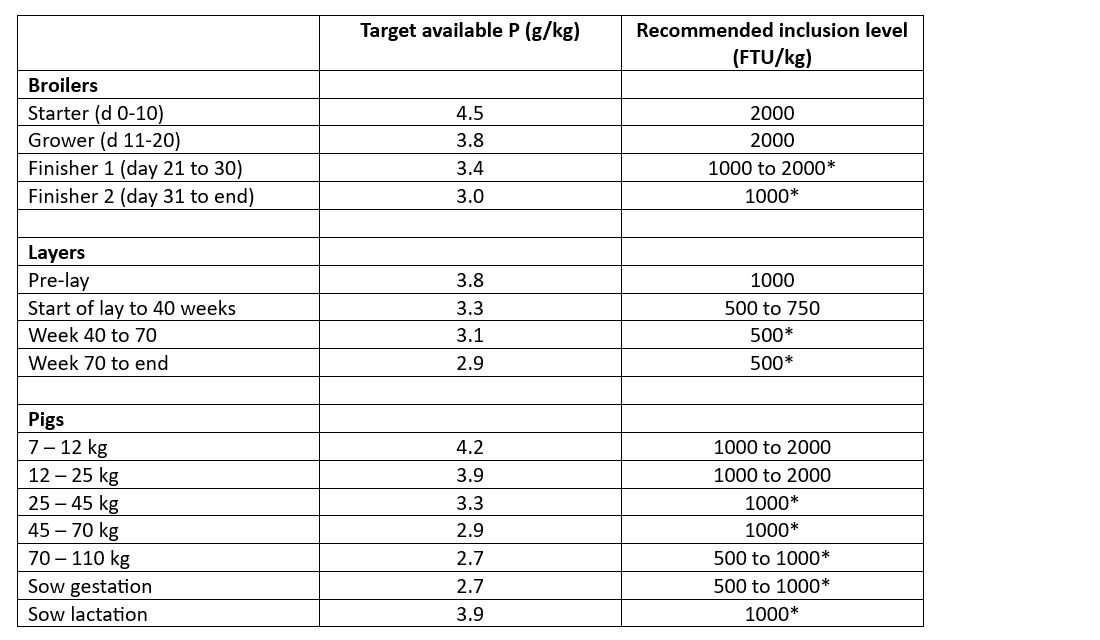Phytate-phosphorus, the storage form of phosphorus (P) in cereal plants, is the target for phytase, releasing the plants' own P and reducing the need for sources of inorganic P to be added to the feed formulation. Replacing all inorganic P in the feed without reducing animal performance is possible for certain formulations, however some considerations need to be made.
Consider the P norms used at formulation
The level of inclusion of inorganic P in feed depends on the P requirements imposed. As of two years ago, the prices of inorganic P rose sharply, causing a tendency to formulate diets closer to the animals' actual requirements for P, reducing the safety margin typically included. This reduced the amount of inorganic P in the feed.
Increasing the dose of phytase
Increasing the dose of phytase reduces the inclusion of inorganic P sources. In theory, all inorganic P can be removed from the diet. However, the limiting factor is the amount of phytate-P in the diet.
While in normal commercial diets (corn or wheat combined with soy) the phytate-P level is approximately 2.5 g/kg, the presence of alternative protein sources can increase these levels up to 2.8 g/kg. On the contrary, including proteins of animal origin (which do not contain any phytate-P) will reduce the level of phytate-P in feed down to 2.0 g/kg.
Assuming that at best only 80% of the phytate is physically accessible by the phytase (and so degradable), this means the maximum amount of P which can be released varies between 1.6 and 2.2 g/kg. Formulating with higher P matrix values for a phytase when added at a higher inclusion level is in theory possible, but in reality, the concentration of phytate-P is the limiting factor.
Taking calcium into account
It is well known that limestone, the major source of calcium (Ca) in feed, has a negative impact on the action of a phytase, in particular when fed in excess and in a fine (highly soluble) form. Reducing the limestone inclusion level and shifting to a coarser form will improve the efficiency of the phytase and thereby its potency to reduce inorganic P sources.
Use a good phytase
The two major characteristics a phytase needs are:
- thermostability
- reliable matrix values
In the first case, a loss of phytase activity due to the high temperatures used during feed manufacture results in lower P release from the phytate than expected. In the second case, if the P matrix value is overestimated, there is a risk that the final feed has a P deficiency. Both characteristics are important, especially as formulation for P gets closer to the actual P requirements, so there is less room for error.
Recommendations
Table 1 gives an overview of the recommended doses of OptiPhos® Plus, a heat stable phytase with reliable matrix values, and at which inclusion levels the feed no longer contains inorganic P considering the target available P levels imposed.




